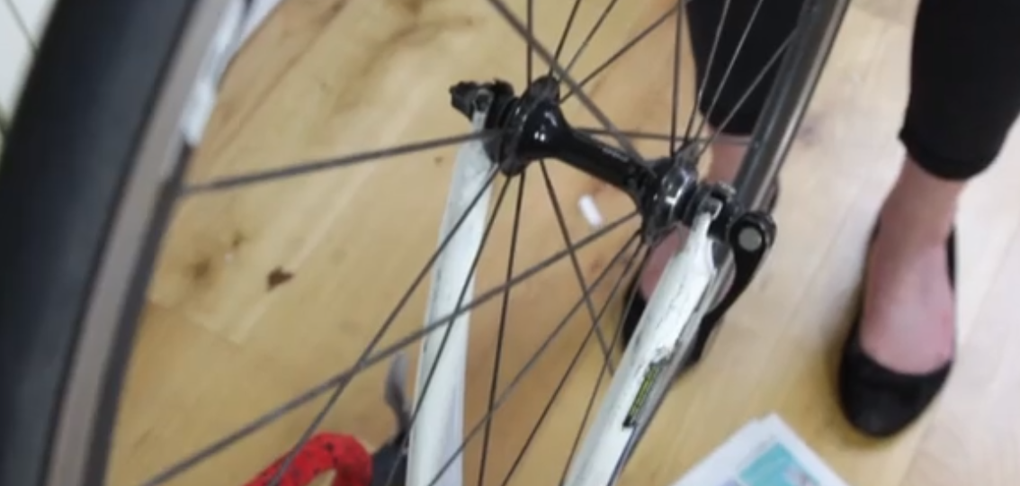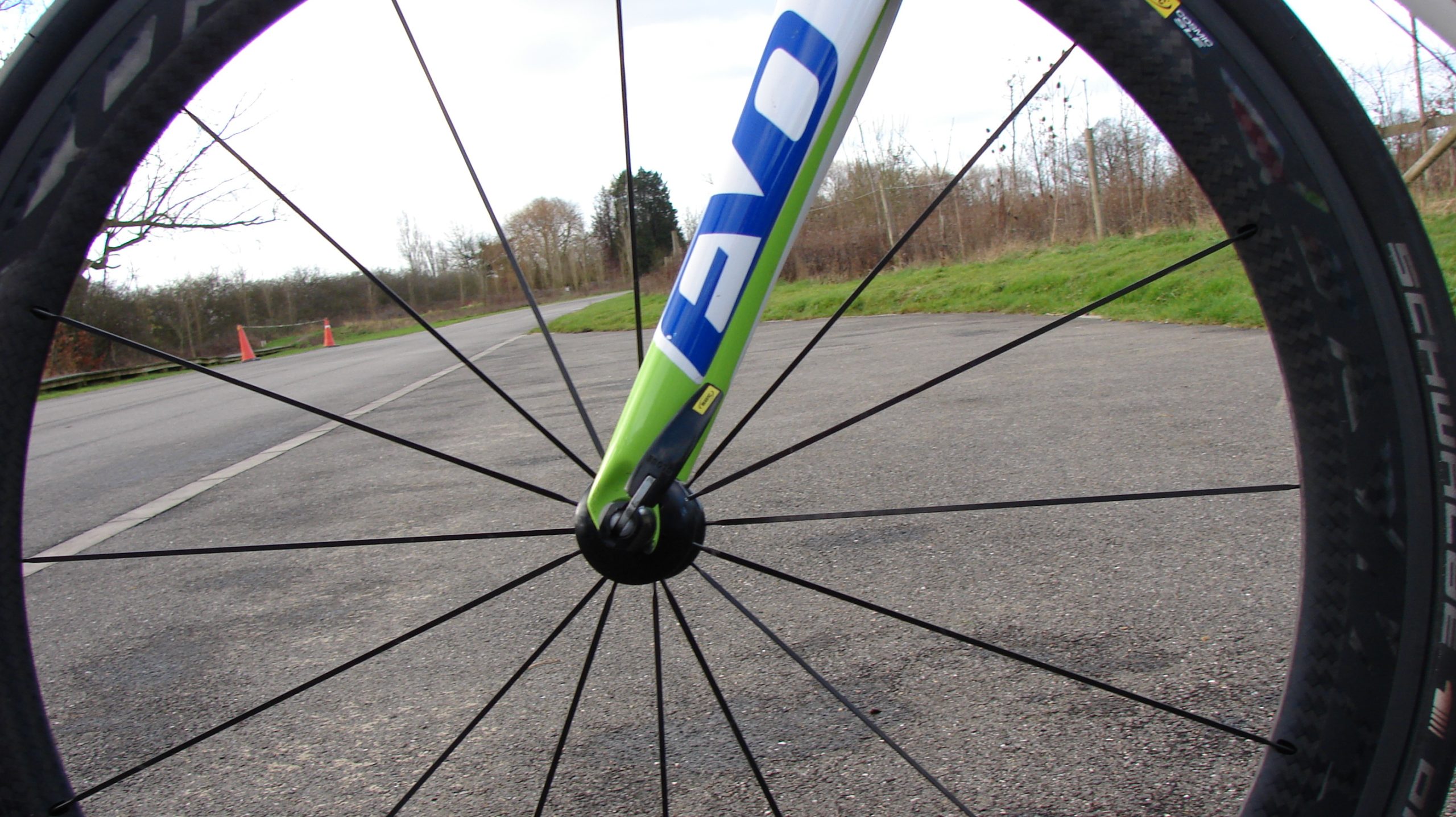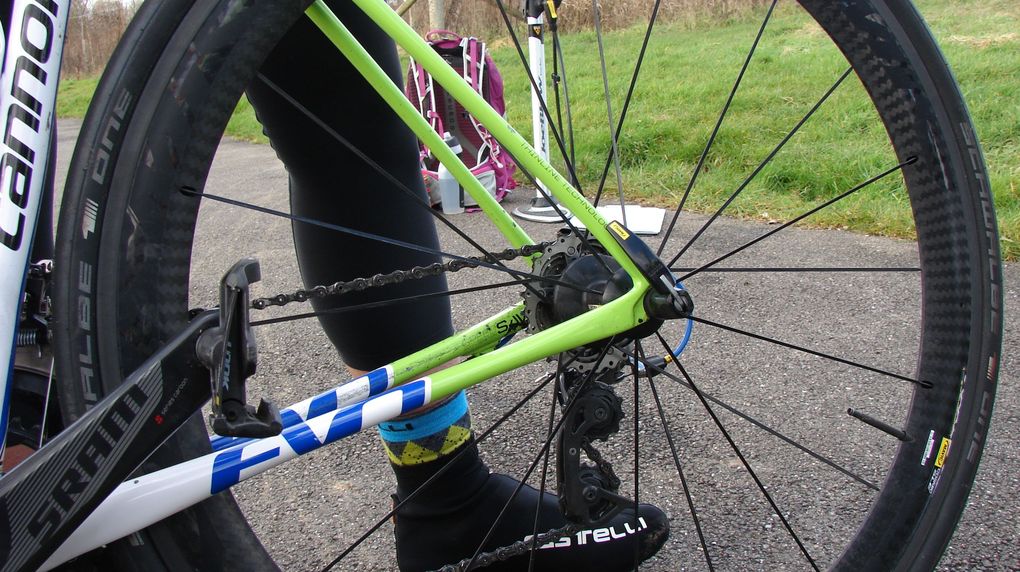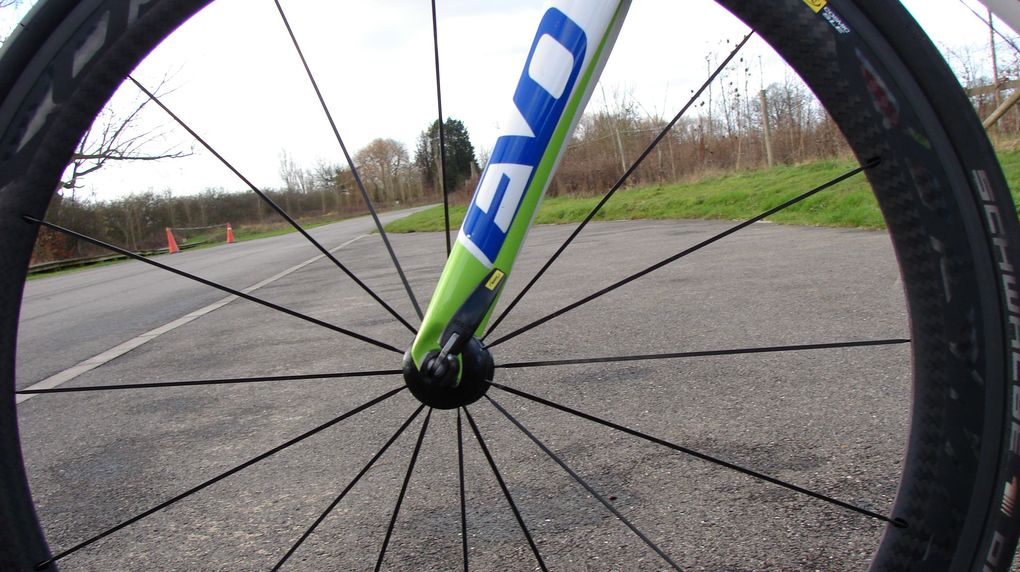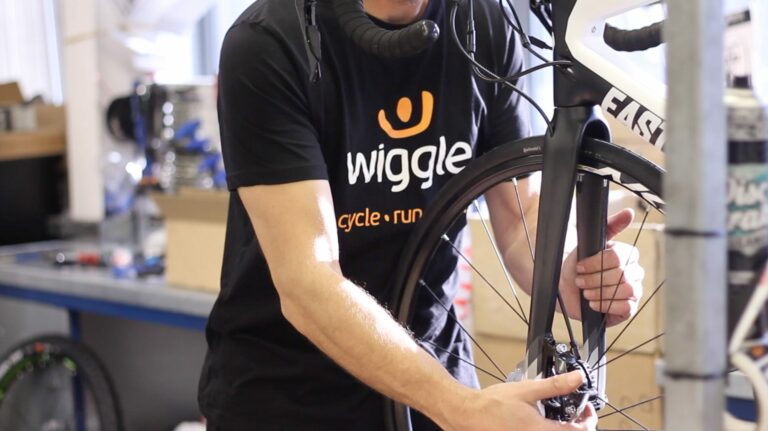There is, however, an extra consideration that we need to address – and that’s how to position the skewer.
At a recent race training day with Kerry Bircher, of Revolution Cycle Coaching, she made a point of looking down to check the way each rider had placed their skewer – and her reaction was immediate: “Right, there’s some riders here who need to adjust their skewers.”
Some nodded understandingly (having first checked theirs to make sure it was correct!), others looked confused. She went on to explain: “Your rear skewer should be in line with your seat stays, chain stays, or between the two. It shouldn’t be facing the back of the bike.”
And why? There is a ‘Rule’ around skewers that reads much like a fashion manual for bikes -[Rule41: Quick release angle on the front skewer shall be an upward angle which tightens just aft of the fork and the rear quick release shall tighten at an angle that bisects angle between the seat and chain stays. It is acceptable, however, to have the rear quick release tighten upward, just aft of the seat stay, when the construction of the frame or its dropouts will not allow the preferred positioning] but this isn’t about fashion, there’s a very real and practical reason.
Bircher explains: “If you’re riding in a group, and someone touches wheels with you with your skewer facing backwards, it might be possible for the front of their wheel to pop open your rear skewer. It sounds quite unlikely, but it has happened.”
Of course, if you tend to ride alone, this might concern you less – but it is worth getting into good habits in preparation for future exploits – and you never know who may have latched on to your back wheel when you’re out exploring the local lanes!

In terms of the front skewer, this is less safety focused and more about fashion – the skewer should be positioned so that the lever sits on the non-driveside to match the rear, and should be just behind the forks. Putting the skewer in line with the forks looks nicer, but any mechanic will tell you that it can make it harder to release since you’ll leave yourself no room for leverage.
The image below shows the skewer in an aesthetically pleasing position, but it might be easier for the rider to remove the wheel if the lever was sitting a little further back from the forks.

So there you have it – the correct way to position your skewer. The only exception might be those searching for the ultimate aero advantage in a time trial – but that’s a story for another day.
If you’re still unsure how to tighten the skewer correctly, check out this video…
